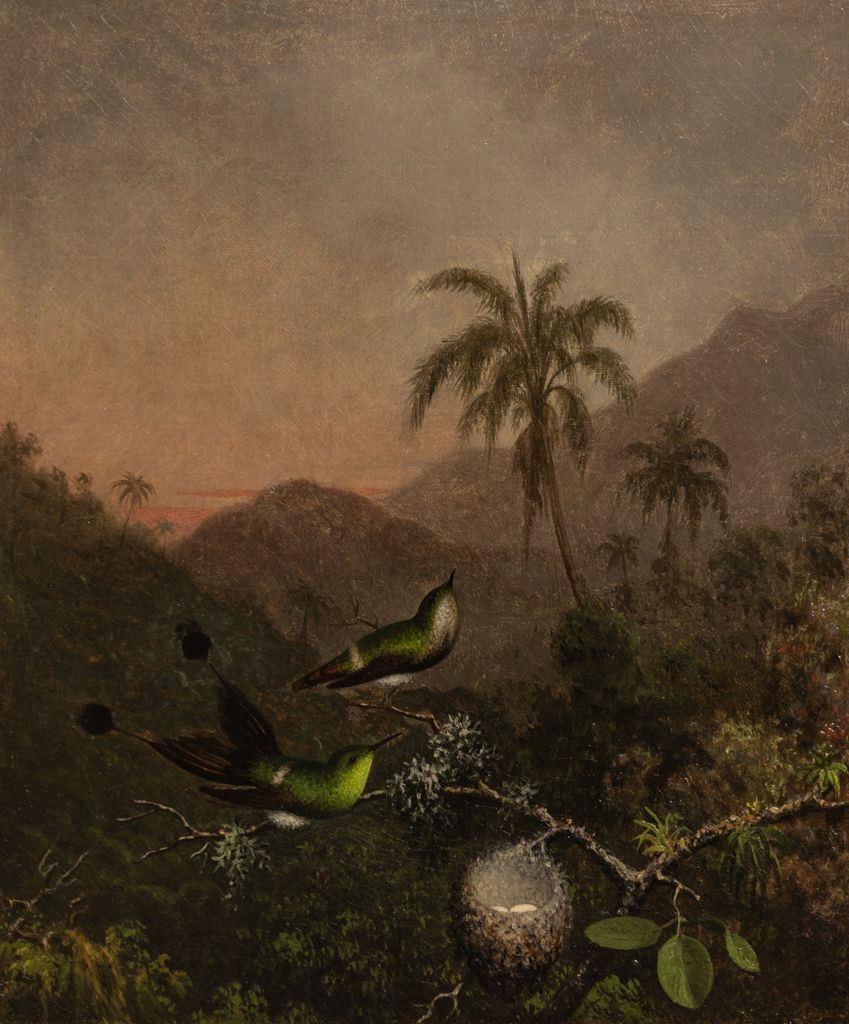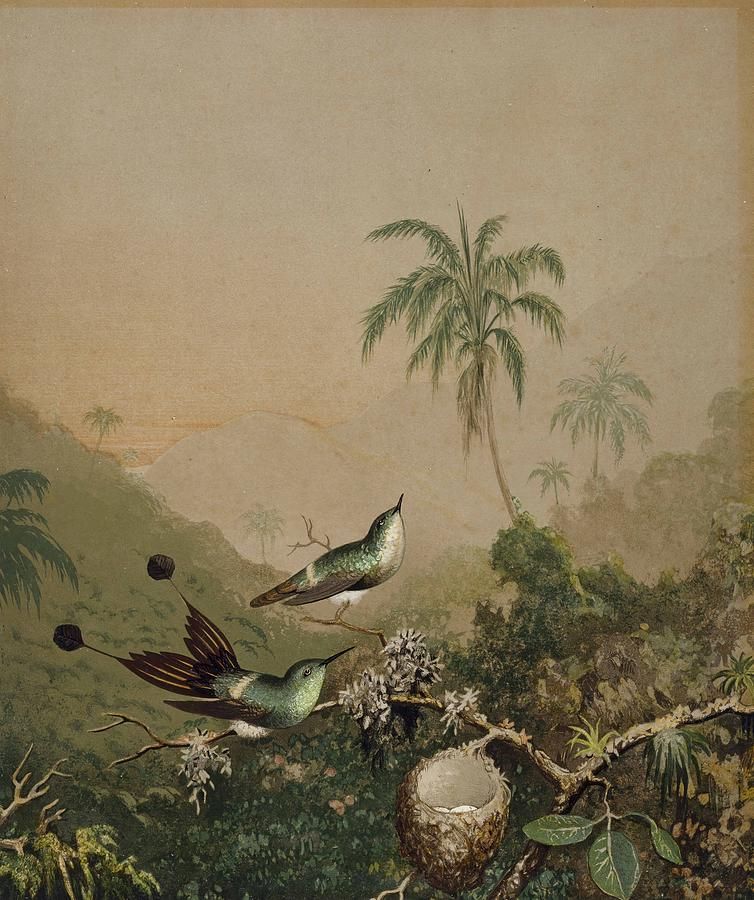
Martin Johnson Heade (1819–1904)
Two Green-Breasted Hummingbirds, c. 1863–64
Oil on canvas
McMullen Museum of Art, Boston College, Carolyn A. and Peter S. Lynch Collection, 2022.53

Oliver Wunsch
Assistant Professor, Art History

This painting is the only confirmed surviving study from The Gems of Brazil series, a group of twenty compositions that Heade planned to publish in a volume devoted to hummingbirds.1 Heade developed the concept for the project in 1863 during his trip to Brazil, where he secured at least sixty subscribers for the publication and received the endorsement of Emperor Dom Pedro II.2 But when Heade left Brazil for London the next year, he struggled to find additional funding for the work. London presented increased competition: John Gould’s Monograph of the Trochilidae, or Family of Hummingbirds had just been completed in 1861, and it contained ample illustrations of the same subjects (see image). The growing British expectation of verisimilitude in natural history illustration also may have clashed with Heade’s fanciful style. Seeking to imply narratives of domestic unity through his avian models, he tended to present pairs of hummingbirds cohabitating near nests with eggs, but he conceded that he had never observed such a moment in real life.3
Perhaps the greatest obstacle that Heade faced was technical. Working with British publishers, he attempted to reproduce his paintings with chromolithography, but the process was costly and did not capture the subtlety of his original colors. A test print of this painting reveals some of the difficulties (see image in entry below). While the colors are vibrant, they notably diverge from those in the original painting, and they show signs of having been retouched by hand, which would have represented an additional expense. Dispirited by these setbacks and out of money, Heade soon gave up his ambition to create his “large and elegant album.”4
1. Theodore E. Stebbins, The Life and Work of Martin Johnson Heade: A Critical Analysis and Catalogue Raisonné (New Haven: Yale University Press, 2000), 284, cat. no. 333.
2. Stebbins, 64.
3. Stebbins, 76.
4. Stebbins, 75.

John McCoy
Assistant Director, McMullen Museum

In the late nineteenth century, artists and naturalists alike turned their attention to the tropics. Charles Darwin’s On the Origin of Species (1859) was written largely from observations in the Galápagos Islands. South America and the Pacific Islands were seen as laboratories in which evolution would be either proven or debunked. At the time, the practice of natural history focused on the discovery and cataloguing of animal and plant species. Popular illustrated works catalogued flora and fauna by type and region, modeled on Audubon’s successful Birds of America (1827–38).
In this context, Martin Johnson Heade undertook a voyage to Brazil in 1863 with the intent of depicting every South American hummingbird in a book of lithographs to be called The Gems of Brazil. Heade spent almost a year and a half in Rio de Janeiro collecting and painting specimens, sending many of his designs to the London lithography studio M. & N. Hanbart. Heade was disappointed, however, with the quality of Hanbart’s reproductions, particularly the dullness of their color. As a result, the printers produced only four finished lithographs before Heade abandoned the project (see image).
Two Green-Breasted Hummingbirds is one of about two dozen paintings Heade made while in Brazil preparing The Gems of Brazil. These works show the birds either perched in profile or facing forward with wings extended; Heade was not concerned with capturing motion so much as clearly depicting the distinguishing features of the species. The jungle and mountain setting is likely a fabrication, though perhaps based on Heade’s travels to the Serra de Tijuca mountain range.

